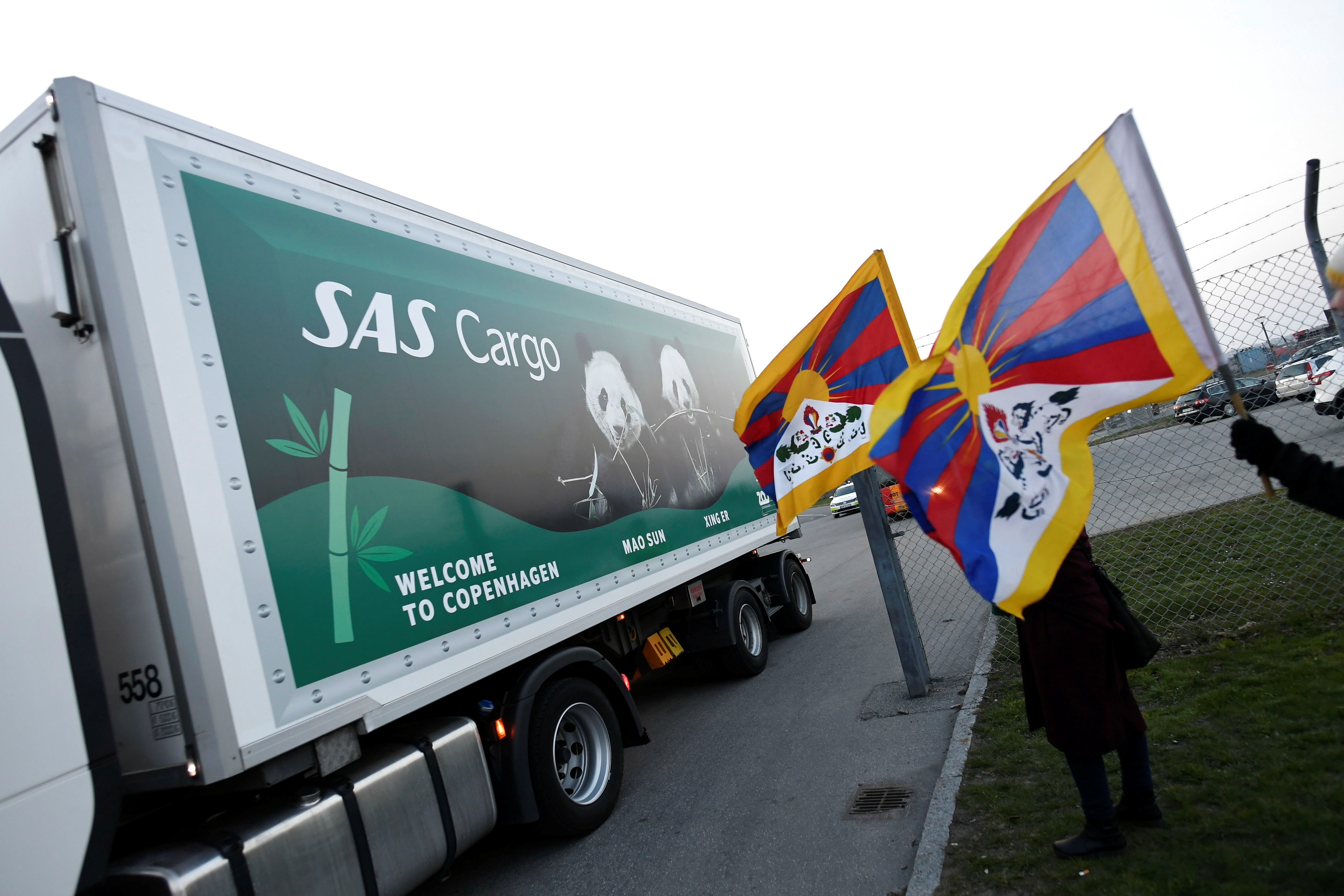Eating shoots and raising questions, Chinese pandas arrive in Copenhagen
China hides neither its Arctic interests nor its use of pandas to get what it wants. In Denmark’s case, the two look connected.

Whatever you think of China’s interests in the Arctic, its recent ambitions to play a larger role in the region have been increasingly explicit. Most notably, in January 2018, Beijing labelled China a “near-Arctic state.” With a geographic location as far from the North Pole as Poland, this is a statement that should be taken strategically, rather than geographically.
In the policy paper in which it codified the term, Beijing stated that China saw itself as a “stakeholder” in the region with a “major role” to play. Science is one area in which it hopes to accomplish this, but the main focus has been its addition of a polar spur to its Belt and Road Initiative, a huge investment program that uses infrastructure investments abroad to strengthen commercial and political relations.
Given China’s obvious interest in the region, it will come as little surprise that, with the arrival of two giant pandas in Copenhagen on Thursday, some observers may suggest the rationale behind the 15-year loan (known officially, if misleadingly, as a “state gift”) lies not in metropolitan Denmark, but in another country within the Kingdom of Denmark — Greenland.
[The real question on China’s new Arctic policy will be how the Arctic responds]
Those looking to find an Arctic connection may start by pointing east, to Finland, which received a pair of pandas of its own in January 2018. The gift was announced in 2017, in connection with the centennial of the country’s independence, but their arrival, several days before the release of the Arctic policy paper, and amid an ongoing discussion of the benefits of building a railway to a port on the Barents Sea, through either Norway or Russia, left the impression that the gift was being given to further Beijing’s interests in the region.
Still, this correlation does not imply there is an Arctic causation. China has been giving away pandas since the 600s and it makes no bones about the reason why.
“When observing the Sino-foreign exchanges,” according to the official website for the Belt and Road Initiative, “it can be seen that pandas, China’s national treasure, have played a significant role in helping bring the two sides closer together and building China’s international image.”
Today, China has pandas at 26 zoos in 18 countries. According to scholars, giving them is often a sign that Beijing has managed to get what it wanted in some way or other. Canada, for example, received pandas in 2012, not long after the completion of a trade deal that took 20 years to negotiate. Most reckon that one of the main reasons why China offered them was an agreement to supply it the uranium it needs to power its nuclear reactors. An agreement to send pandas to France came after a deal in which Paris said it would permit the sale of nuclear-power technology to China.
[China in the Arctic: Emerging dragon]
Conversely, a pair that was bound for Norway instead went to Scotland in 2011, after the Norwegian Nobel Committee, which awards the peace prize of the same name, gave the award the year before to Liu Xiaobo, a Chinese dissident. With the pandas went Chinese purchases of salmon; shortly after the pandas arrived, Chinese firms made deals with Scottish salmon farmers, cancelling, at the same time, long-standing Norwegian agreements.
Pandas, though a gift, do not come cheap. In Denmark’s case, Copenhagen Zoo will pay $1 million a year for the privilege of housing them. This is in addition other sundry costs, such as the construction of a new panda facility, to the tune of $30 million, and an annual $50,000 payment to a panda facility in China. Ostensibly, the money goes to protecting pandas in the wild, but this is hard to confirm independently, say transparency advocates.
Critics say the money is just one type of cost they find unacceptable. The other is that the pandas appear to be a reward for Copenhagen toning down its criticism of Beijing’s treatment of Tibet, as well as compromising on other concerns.
This has some merit. Denmark has indeed taken to criticising China less in public, in the hope that raising concerns in private will be more effective. Further, not harping on areas where they disagree is more conducive to trade. The tourism industry is also keen to bring in more Chinese visitors. Both, the argument goes, can expose the Chinese to Western ideas.
[US defense investments in Greenland infrastructure would keep NATO in, China out and Russia at bay]
The Danes, though, have not been all kid gloves when it comes to relations with Beijing. In March, TDC, a telecom, selected Sweden’s Ericsson over China’s Huawei as the producer of equipment for is 5G mobile telephone network. TDC’s bosses underscored at the time that the decision was purely commercial, but they also made it clear that they had been well briefed about official security concerns related to Huawei’s kit.
Likewise, in Greenland, though Copenhagen has respected that foreign investment in mining is a matter for Nuuk to administer, it has stepped in twice to prevent Chinese investments in infrastructure. Though this was in all probability at the behest of Washington, successive security assessments have noted with mild concern that China is seeking influence in the Arctic. In Greenland’s case, the interest, the snoops reckon, appears legitimate, but they worry that even modest Chinese investment would have an outsized impact in a country of its size. They also fret that the political system is vulnerable to outside influence.
Whatever Beijing hopes to accomplish with its pandas, it appears they are willing to suffer these slings and arrows to make it happen. Barring any last-minute change of heart, starting tomorrow, China will have something cute in the state of Denmark.